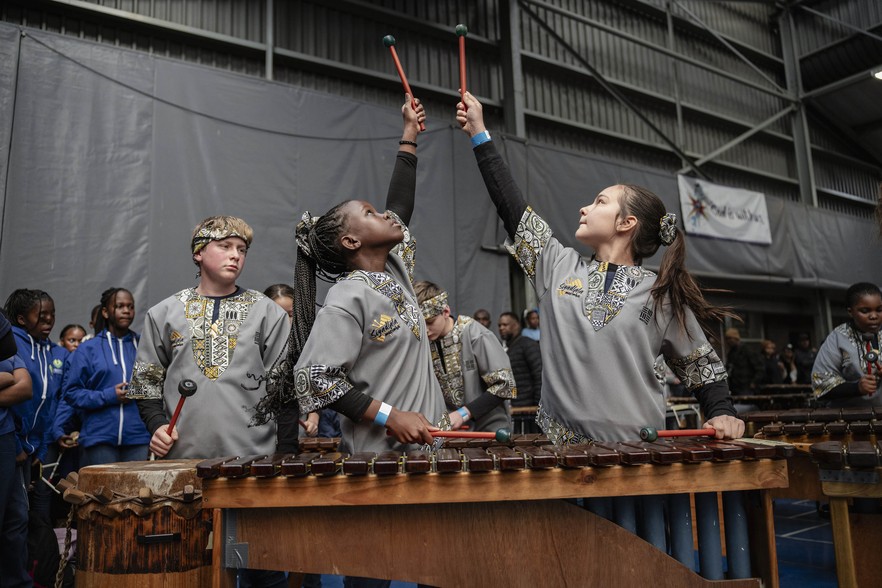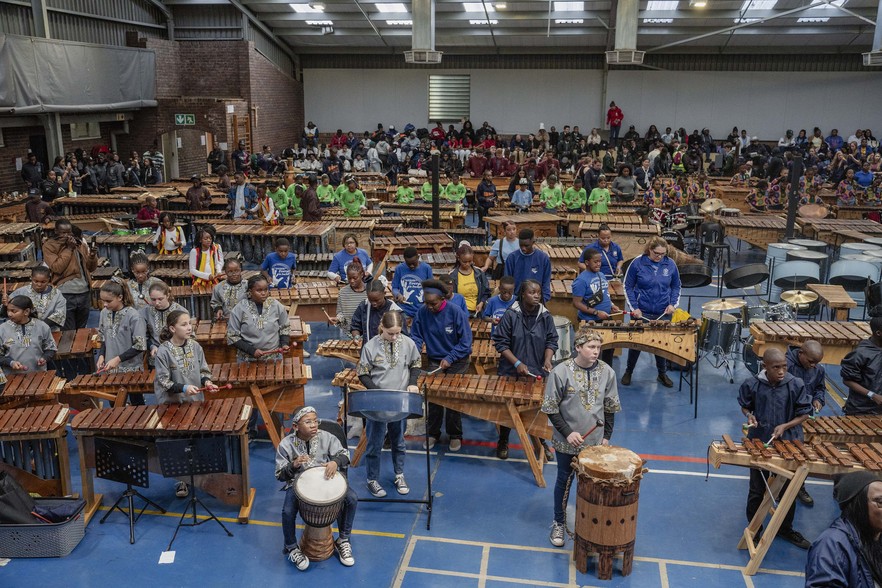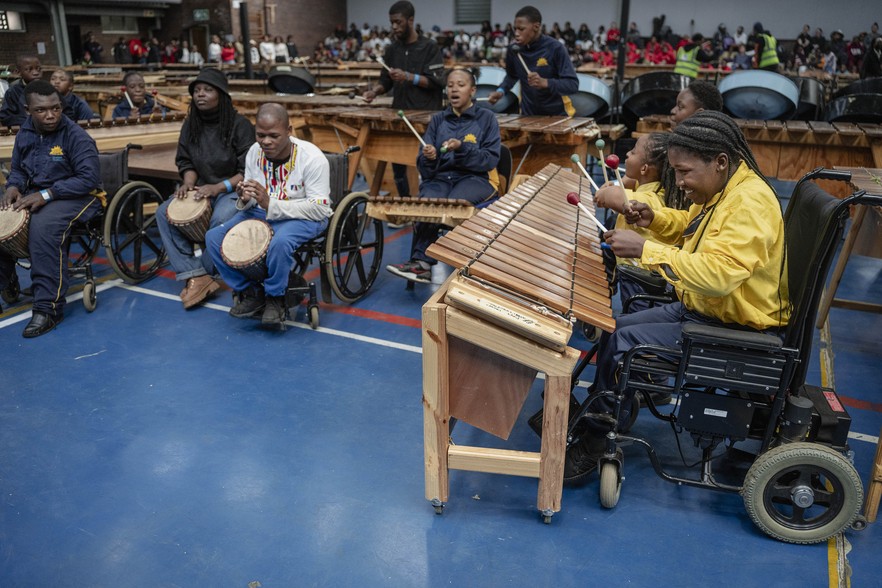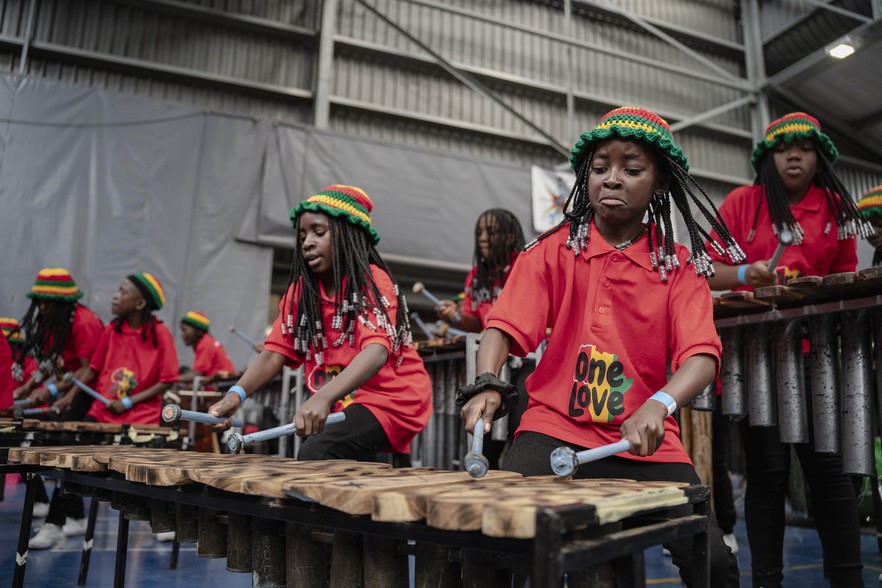Boksburg school hosts massive international marimba festival
This year’s International Marimba and Steelpan Festival featured a record 2,300 musicians from across South Africa and neighbouring countries
Members of the Siyadlala Marimba travelled from Richard’s Bay in KwaZulu-Natal to participate in the 13th annual International Marimba and Steelpan Festival. Photos: Ihsaan Haffejee
The sound of hundreds of marimbas echoed through the halls of St Dominic’s School in Boksburg, Gauteng this weekend as thousands of people gathered to participate in the annual International Marimba and Steelpan Festival. The music festival which is now in its 13th year is hosted by the non-profit organisation Education Africa.
“We are extremely proud of the fact that the Education Africa International Marimba and Steelpan Festival is the largest festival of its kind in the world. And it is also fully inclusive, enabling disabled musicians to compete on an equal footing,” said James Urdang, the CEO and Founder of Education Africa.
Over a dozen different marimba bands joined a mass jam session during the festival.
The marimba, a percussion instrument, is one of the oldest and most popular instruments on the African continent. As part of its approach to promote holistic learning, Education Africa promotes the teaching and learning of the marimba instrument at schools.
This year’s festival featured a record number of 2,300 musicians from all over South Africa and from neighbouring countries like Botswana and Zimbabwe and as far as Trinidad and Tobago.
Learners from Ithembelihle LSEN School in Gauteng, which caters for physically disabled learners, showcased their marimba and drumming skills.
The theme for this year’s festival was Peace and Harmony.
Fumanekile Shumane, a teacher from the Ithembelihle LSEN School which caters for physically disabled learners, said it was a fantastic experience for the students to showcase their marimba playing skills at the festival. “It’s wonderful to be a part of this festival and to see how music brings everyone together,” said Shumane.
Besides the main events, there were also fringe events running throughout the weekend where participants could learn and play marimba, steelpans and djembes as well as learn dance and singing from different instructors.
Young musicians from the Brookside School in Zimbabwe incorporated a dance routine in their performance.
“The rhythms and melodies of the marimba and steelpan have a unique ability to uplift spirits, forge connections and remind us of our common humanity,” said Joan Lithgow, the festival director.
For Lithgow who has dedicated herself to making a difference in people’s lives through music the journey of spreading the joys of the marimba continues. “When I am asked why I teach music the answer is never to create good music or create musicians.
“It is always the other things that engaging in music-making does for children. Team building, building of self-esteem, creating a feeling of belonging, developing listening skills, being empathic and developing sensitivity and so much more. If I get good music out as well it is a bonus,” said Lithgow.
The band from St. Martin’s Convent school in Zimbabwe were a crowd favourite and got a loud ovation during their reggae themed performance.
Support independent journalism
Donate using Payfast

Don't miss out on the latest news
We respect your privacy, and promise we won't spam you.
Next: Mpondoland dagga growers left out to dry
Previous: Pressure mounts for Gwamanda to be removed as Joburg Mayor
© 2024 GroundUp. This article is licensed under a Creative Commons Attribution-NoDerivatives 4.0 International License.
You may republish this article, so long as you credit the authors and GroundUp, and do not change the text. Please include a link back to the original article.
We put an invisible pixel in the article so that we can count traffic to republishers. All analytics tools are solely on our servers. We do not give our logs to any third party. Logs are deleted after two weeks. We do not use any IP address identifying information except to count regional traffic. We are solely interested in counting hits, not tracking users. If you republish, please do not delete the invisible pixel.





